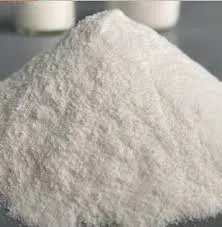
12-р сар . 04, 2024 09:22 Back to list
Exploring Various HPMC Grades and Their Applications in Different Industries
Exploring Different Grades of HPMC Properties, Applications, and Benefits
Hydroxypropyl Methylcellulose (HPMC) is a cellulose ether that has become increasingly significant in various industrial applications, particularly in pharmaceuticals, food, construction, and personal care products. Its unique properties stem from the variations in its grade, which are determined by the degree of substitution, viscosity, and molecular weight. This article explores different grades of HPMC, their characteristics, applications, and the advantages they offer in multiple sectors.
Understanding HPMC
HPMC is derived from cellulose, a natural polymer that is abundantly found in plant cell walls. The modification of cellulose through hydroxypropyl and methyl substitution enhances its solubility in water and provides a range of viscosity levels, making it a versatile ingredient. HPMC is non-toxic and environmentally friendly, contributing to its popularity across various industries.
Different Grades of HPMC
The degrees of substitution and molecular weight categorize the various grades of HPMC. Typically, HPMC is classified into three main categories
1. Low Viscosity HPMC This grade has a low molecular weight and produces a thin solution when mixed with water. It is commonly used in applications that require quick disintegration, such as in tablet formulation where rapid release of the active ingredient is crucial.
2. Medium Viscosity HPMC This grade strikes a balance between viscosity and solubility. Medium viscosity HPMC is often used in applications requiring a thicker, more viscous solution. It is suitable for suspensions and emulsions in pharmaceutical formulations, providing enhanced stability and improved texture.
3. High Viscosity HPMC With a high molecular weight, this grade produces a very viscous gel-like solution. High viscosity HPMC is commonly used in products where a thicker and more stable structure is necessary, such as in certain types of adhesives, construction materials, and even in cosmetics where enhanced texture and film-forming properties are beneficial.
Applications of HPMC Grades
The varying grades of HPMC enable its use in a plethora of applications
- Pharmaceuticals In the pharmaceutical industry, HPMC serves as a binder in tablet formulations, a thickener for suspensions, and a controlled release agent. Low viscosity types may be utilized for faster drug release, while high viscosity forms can create sustained-release profiles.
different grades of hpmc

- Food Industry HPMC is widely used as a food additive (E464) for its emulsifying and thickening properties. It enhances texture in sauces, ice creams, and baked goods, allowing for better mouthfeel and stability.
- Construction In construction, HPMC is employed in mortar and tile adhesives, where it improves workability and water retention, allowing better adhesion and reduced cracking.
- Personal Care Products In the cosmetics and personal care sector, different grades of HPMC are used as thickeners and stabilizers in products like creams, lotions, shampoos, and gels
. They contribute to the desired viscosity and enhance the sensory attributes of these products.Benefits of HPMC
Utilizing HPMC in various applications offers numerous benefits
- Versatility The different grades of HPMC can be tailored to meet the specific needs of diverse formulations, making it highly versatile across industries.
- Non-toxic and Safe HPMC is generally recognized as safe (GRAS) and is non-toxic, making it suitable for applications in both food and pharmaceuticals.
- Improved Stability HPMC enhances the stability of various products, particularly emulsions and suspensions, improving shelf life and performance.
- Enhanced Texture and Appearance In food and personal care products, HPMC improves texture and consistency, leading to a more appealing final product.
Conclusion
The various grades of Hydroxypropyl Methylcellulose play a vital role in numerous sectors due to their unique properties and versatility. By understanding the differences in viscosity and molecular weight, manufacturers can select the appropriate HPMC grade for their specific applications, ensuring optimal performance and product quality. As industries continue to innovate, the demand for diverse HPMC grades is likely to grow, further emphasizing its importance in modern formulation science.
-
Versatile Hpmc Uses in Different Industries
NewsJun.19,2025
-
Redispersible Powder's Role in Enhancing Durability of Construction Products
NewsJun.19,2025
-
Hydroxyethyl Cellulose Applications Driving Green Industrial Processes
NewsJun.19,2025
-
Exploring Different Redispersible Polymer Powder
NewsJun.19,2025
-
Choosing the Right Mortar Bonding Agent
NewsJun.19,2025
-
Applications and Significance of China Hpmc in Modern Industries
NewsJun.19,2025







